Exploring Ephesus | An Ancient city in Turkey
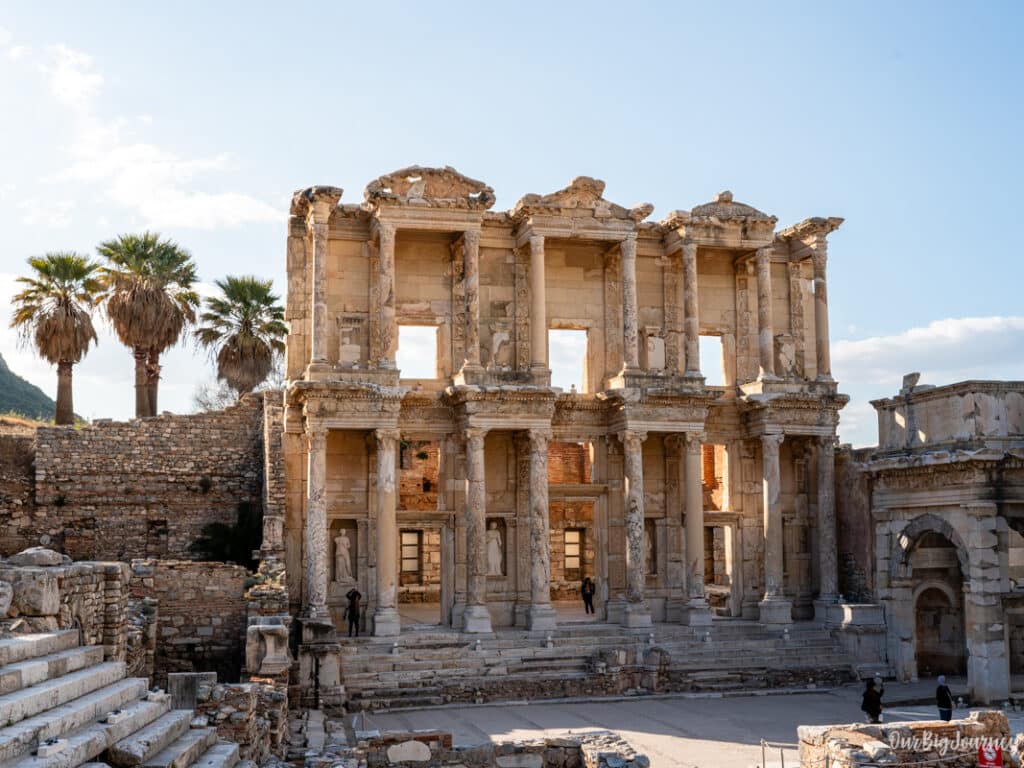
By Roberto (May 25)
⏱️ 7 min
During our trip to Turkey, Ephesus really surprised me as one of the world’s best-preserved ancient cities in the Mediterranean. Forget the concept that you’re “just” going to visit someone ruins. Exploring Ephesus is an unforgettable experience that combines history, architecture, and cultural wonder.
When we were planning the trip, we saw multiple posts about it and it was in every Turkey tour package. Now we know why. Ephesus was once one of the largest cities of the Roman Empire and today remains one of the most impressive archaeological sites in the world. From temples and theatres to lavish Roman homes, this place offers a glimpse into a world that shaped Western civilization.
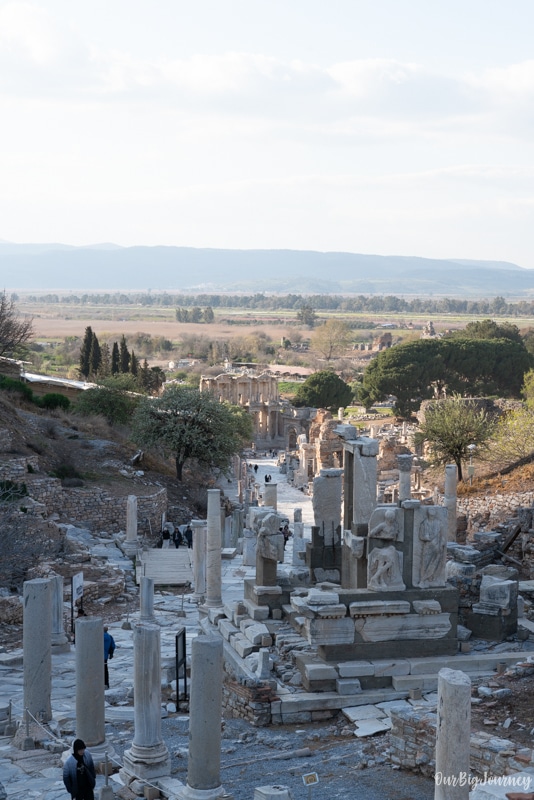
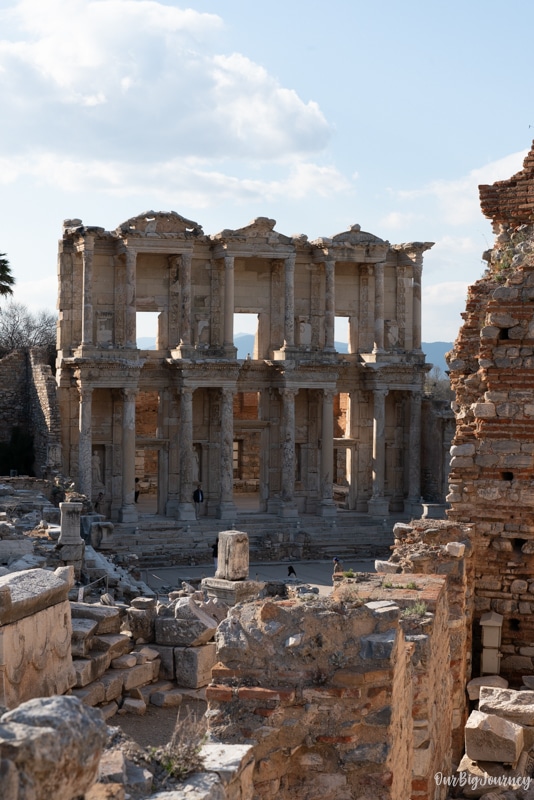
Located near the town of Selçuk in Izmir Province, Ephesus was once a major hub of commerce, religion, and political power in the Roman Empire (4th biggest city of the Empire). Today, it stands as a UNESCO World Heritage Site and a must-visit destination for anyone interested in history and the ancient world.
Table of Contents
Getting to Ephesus & Entrance Fees
Ephesus is easy to reach from nearby cities:
- From Izmir: Approx. 1 hour by car or train
- From Kuşadası: 30 minutes by car or bus
- From Istanbul: Flights to Izmir + transfer to Selçuk
Many visitors also come via cruise ships that dock at Kuşadası. Actually, if we do (someday) a cruise through the Greek Islands, I wouldn’t mind stopping there again.
If you go by car, there is a big free parking lot right next to the entrance. There is a WC (you have to pay 10 TRY), ATM, and some snack and souvenirs stores.
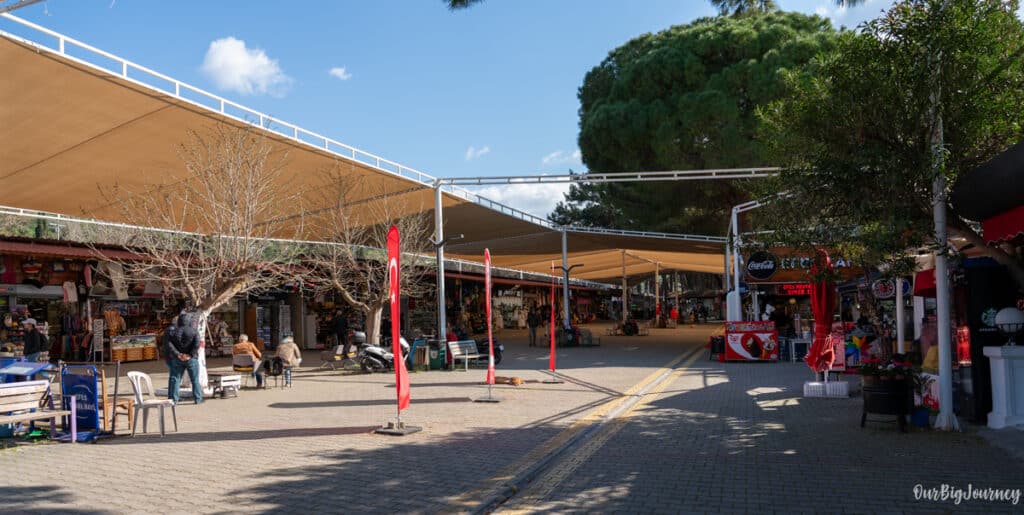
Entrance Fees:
To explore Ephesus you have to pay for entrance tickets, and they are not cheap. Well, considering how amazing it is, the price could be considered “ok”, but still, the regular ticket is 40 € per person, and we DO RECOMMEND also getting a personal or group guide. Tickets can be bought at the gate or online (not available in 2025 so far). Guided tours are available in several languages.
- Main Site: 40 €
- Terrace Houses: 15 €
- House of the Virgin Mary: 14 €
- Combo Tickets: Available and often include the Ephesus Archaeological Museum and House of the Virgin Mary
You can ask there or check beforehand for guides in your language. We couldn’t get a group guide, so we paid 60 € for a 1.5 h personal guide.
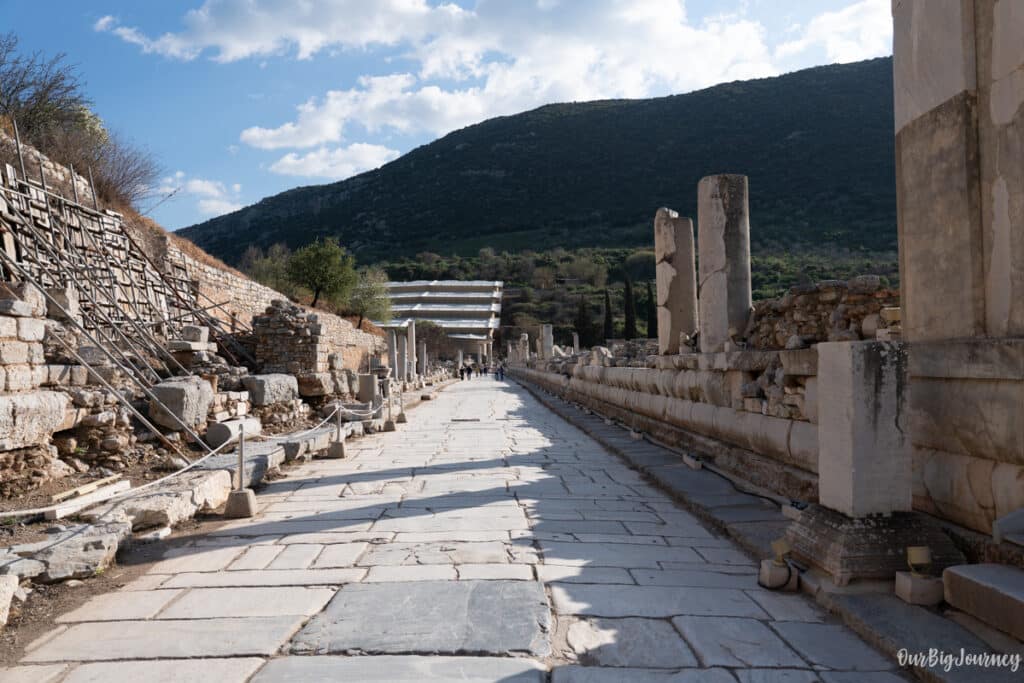
Top Things to See When Exploring Ephesus
Walking in Ephesus felt, somehow, like walking through a living museum. I could imagine how Romans lived there, the aesthetics, the columns… the order and the chaos. Thanks to being really well preserved, you feel like you are there. I can’t exactly explain the feeling.
Here are the most fascinating highlights:
📚 Library of Celsus
This awesome library (reconstructed) is one of the most Instagrammable ruins in Turkey. Built in 117 AD, it once held over 12,000 scrolls and served as both a library and a monumental tomb for Tiberius Julius Celsus. The façade, with its intricate carvings and elegant columns, remains a symbol of knowledge and culture. It looks beautiful because it is!
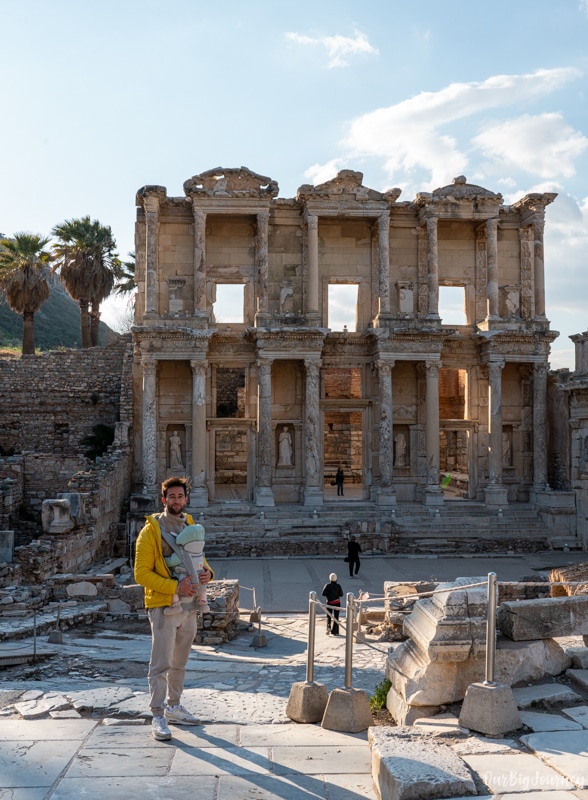
🎭 The Great Theatre
Capable of seating 25.000 people, the Great Theatre was used for drama, concerts, and even gladiator contests. The scale and acoustics are so impressive that it’s still used today for special performances. When we went it was being reconstructed, since in Ephesus they have soooo much work to do. We explain later why.
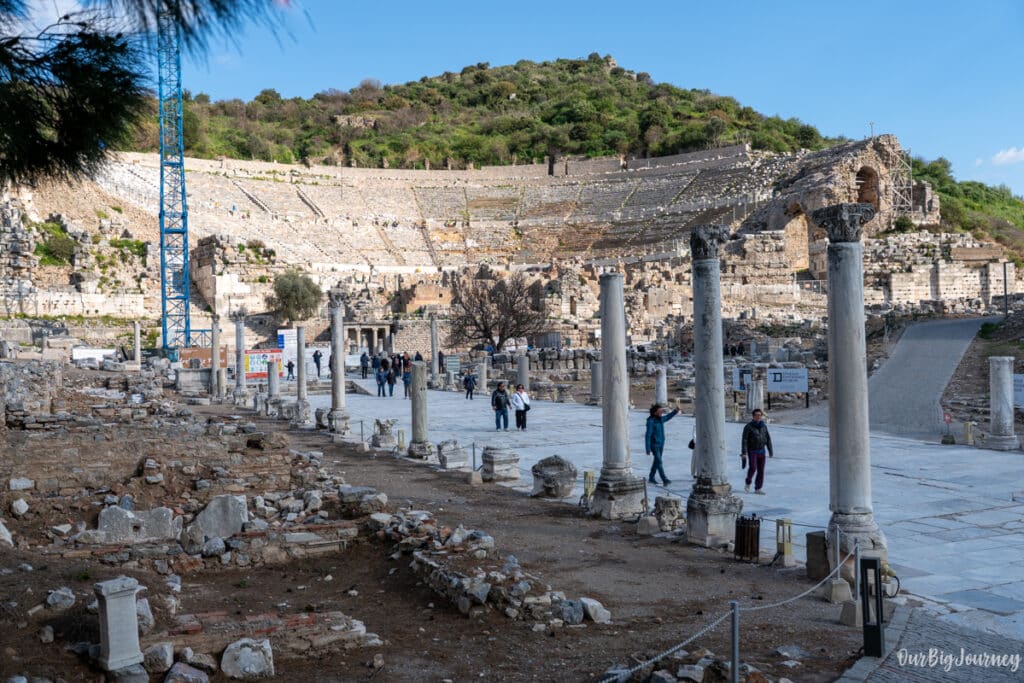
🏛️ Terrace Houses
Also known as the “Houses of the Rich,” these well-preserved Roman homes are covered to protect their delicate mosaics and frescoes. Featuring multi-level floor plans, underfloor heating, and running water, they offer insight into daily life among Ephesus’ elite.
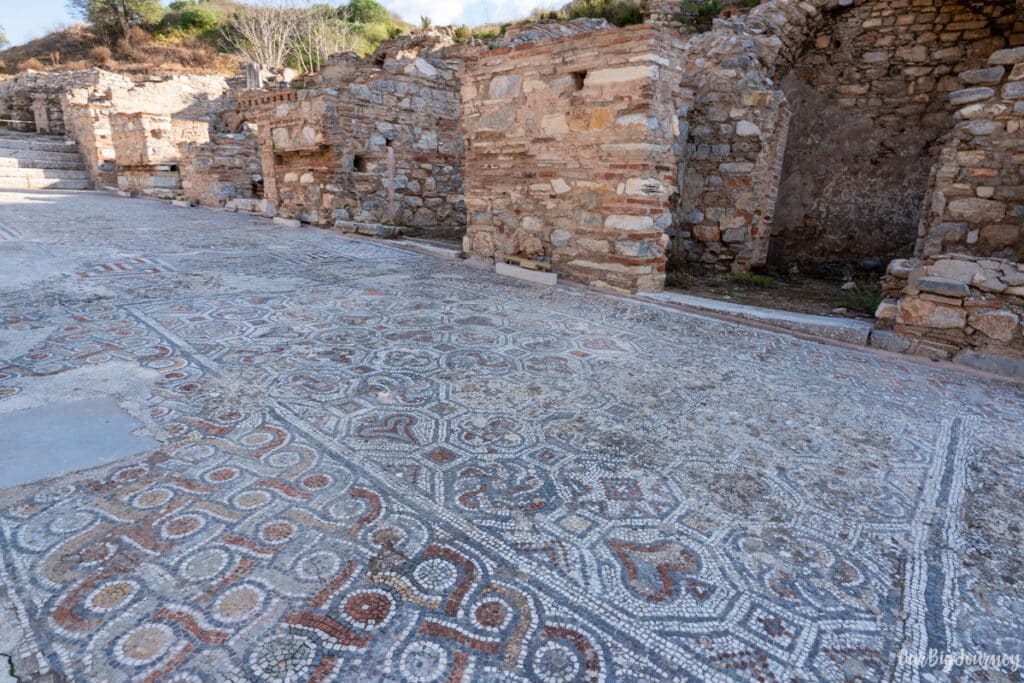
🛤 Curetes Street
A main road connecting major public buildings, Curetes Street was lined with statues, temples, fountains, and shops. As you walk along the original marble paving, you’ll feel like you’re retracing the footsteps of ancient Roman citizens. It is said that they even had slaves heating the marble of the toilets in this street!
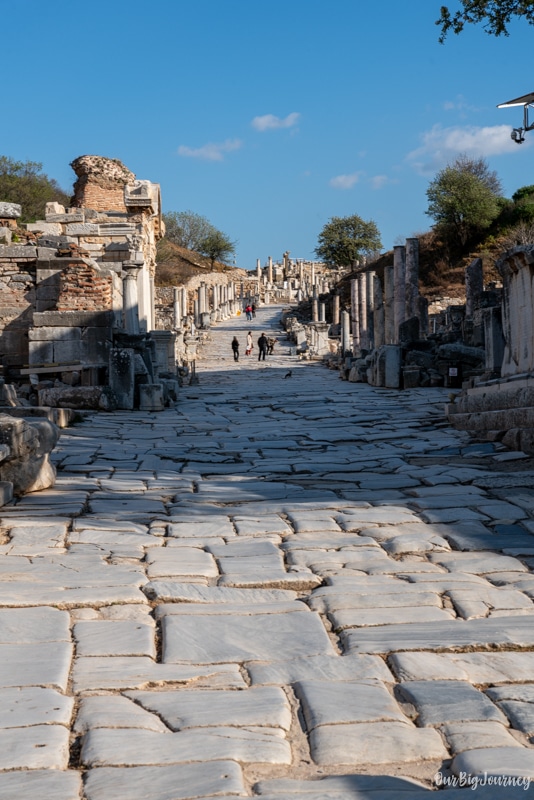
🏛 Temple of Hadrian
Built in the 2nd century AD, this temple shows impressive decorative reliefs that narrate the mythological origins of Ephesus. It’s a stunning example of Roman religious architecture.
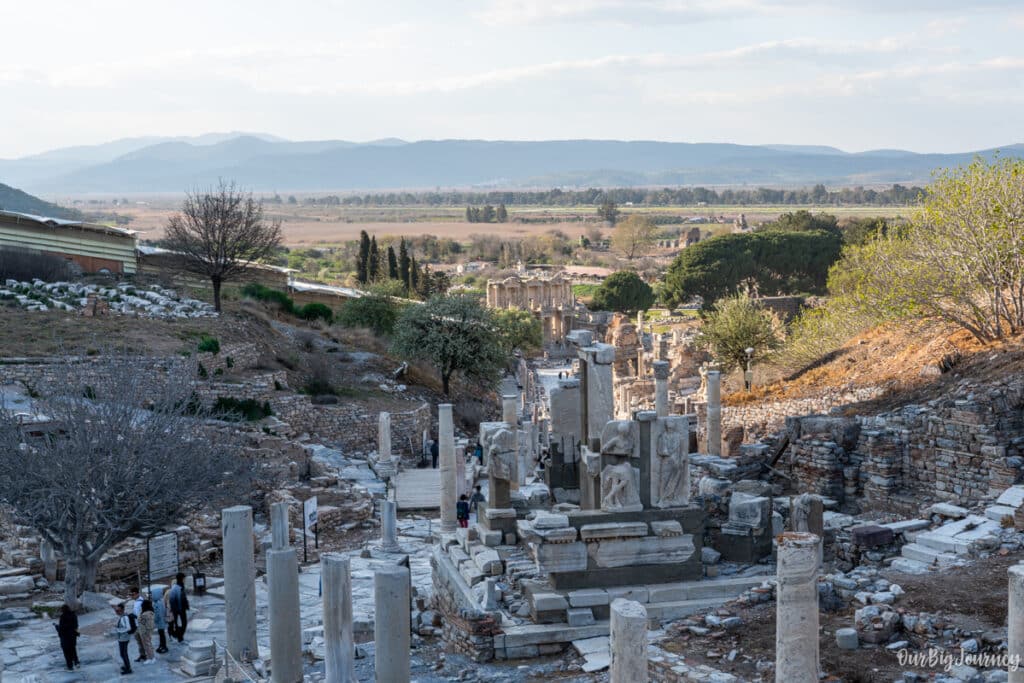
🏟 The Odeon and Agora
The Odeon served as a smaller theatre for music and political events, while the Agora was the live commercial hub of the city. Together, they illustrate how Ephesus functioned as both a civic and cultural center.
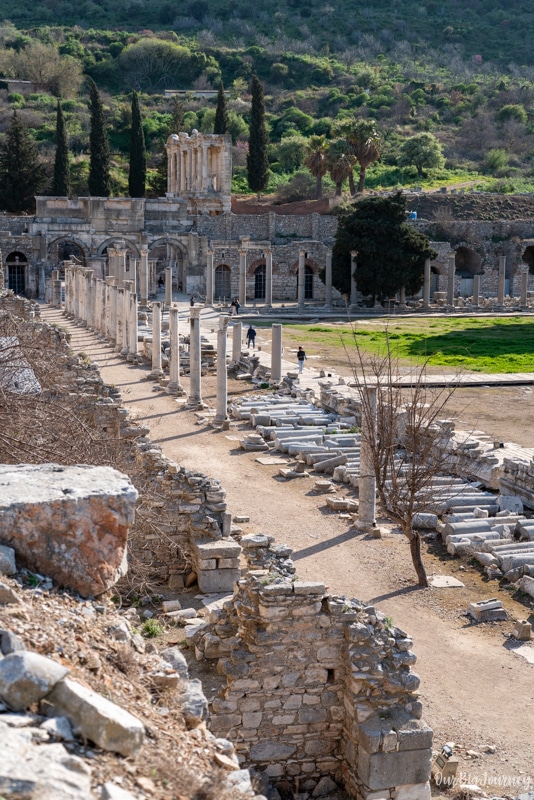
Tips for Visiting Ephesus
- When to Go: Spring (April–June) and autumn (September–October) offer the best weather and lighter crowds. We went by the end of March and it was quite windy, but still we enjoyed the visit.
- What to Bring:
- Comfortable walking shoes (lots of uneven stone paths)
- Sunscreen, hat, and water (there’s little shade)
- Camera or smartphone
- Time Required: 2–4 hours, more if you include Terrace Houses or go with a guided tour
- Amenities: Restrooms and a small café are available near the entrance.
- With babies: we went there with our baby Lara (she was 7 months) and we didn’t have much problem. BUT don’t go there with a stroller because the ground is can be quite uneven.
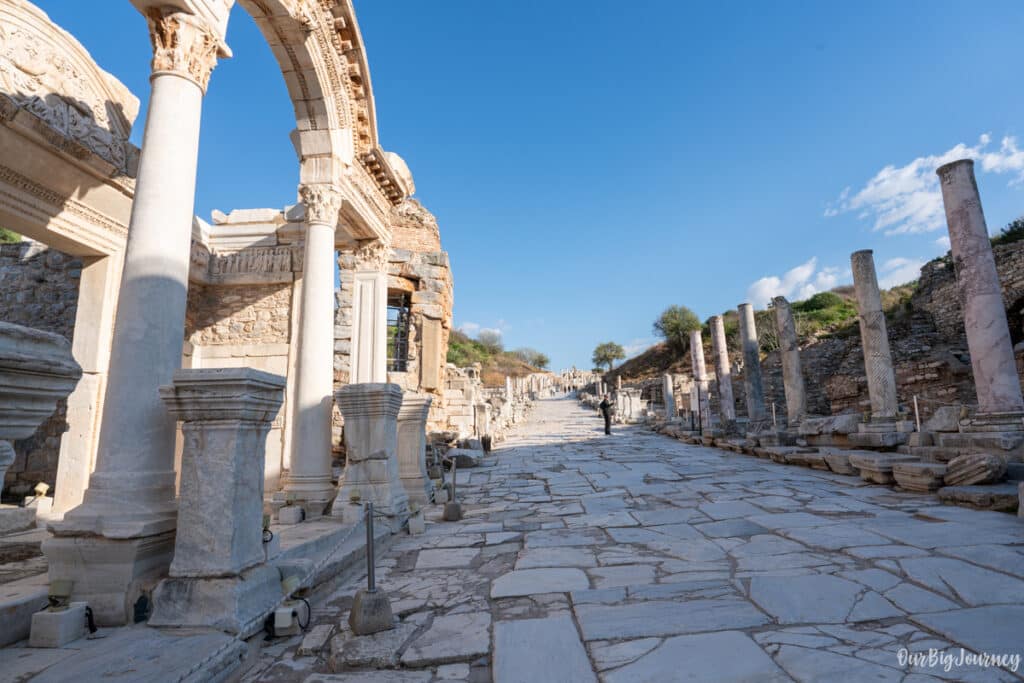
Nearby Attractions to add when visiting Ephesus
While exploring Ephesus is the main highlight, there are several other attractions nearby worth visiting if you have extra time (or you are a devote):
🕊 House of the Virgin Mary
Located on Mount Koressos, this peaceful site is believed by many to be where Mary, the mother of Jesus, spent her final days. It is a pilgrimage destination for both Christians and Muslims alike.
🏛 Temple of Artemis
This was once one of the Seven Wonders of the Ancient World but today, only a single reconstructed column remains. It’s still worth visiting for its historical significance and proximity to Ephesus. My advice here would be to watch some videos in Youtube to understand how big and important it really was.
🏺 Ephesus Archaeological Museum (Selçuk)
This museum is well-curated with statues, artefacts, coins, and household items recovered from Ephesus. Visiting it either before or after the site itself will deepen your understanding of what you’ve seen.
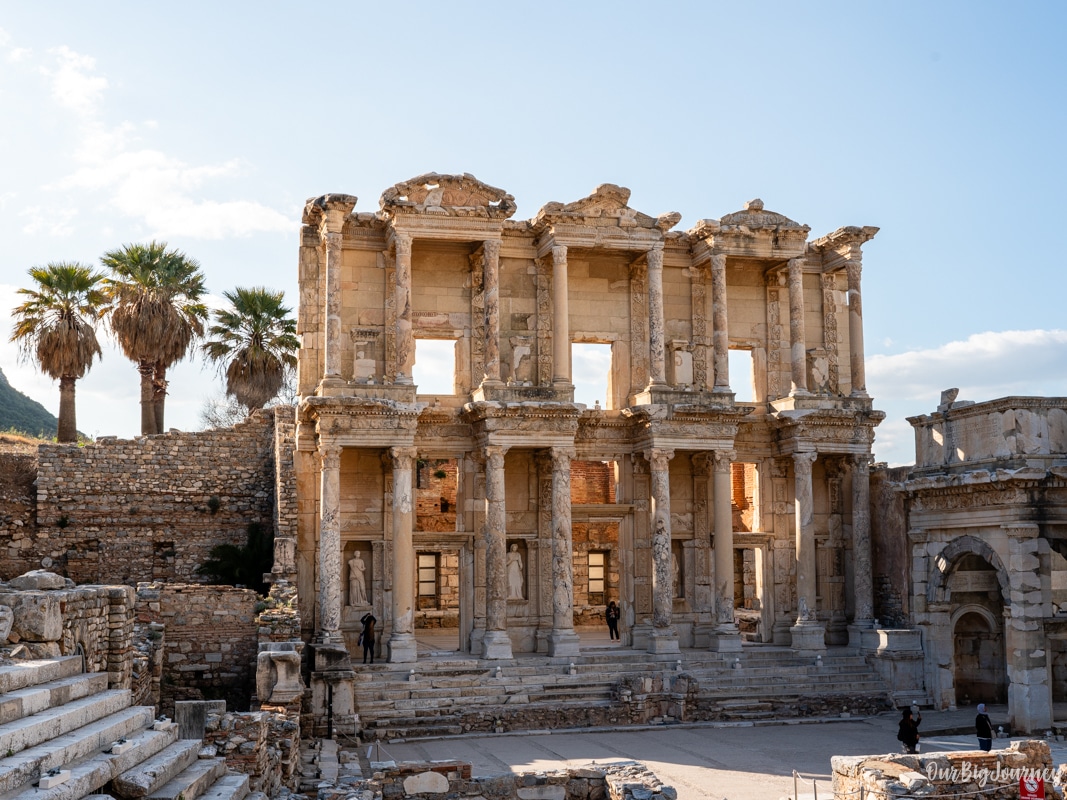
Crazy facts about Ephesus
Ephesus is mostly undiscovered. While the main streets and many highlights have been discovered, it is estimated that 80% or more of the city remains buried. This is insane, considering the size of the archeological site.
Another thing the guide told us is that the government wants to put a ton of resources to make Ephesus a port again. They will remove hectares of land to make the city a “living port” again. This epic project will give the real feeling of a trade port and bring the water views to the city.
Finally, recently (according to our guide), they have found another theatre, colisseum-type, buried in the mountain. They will start the excavations soon and probably add an entrance to the city.
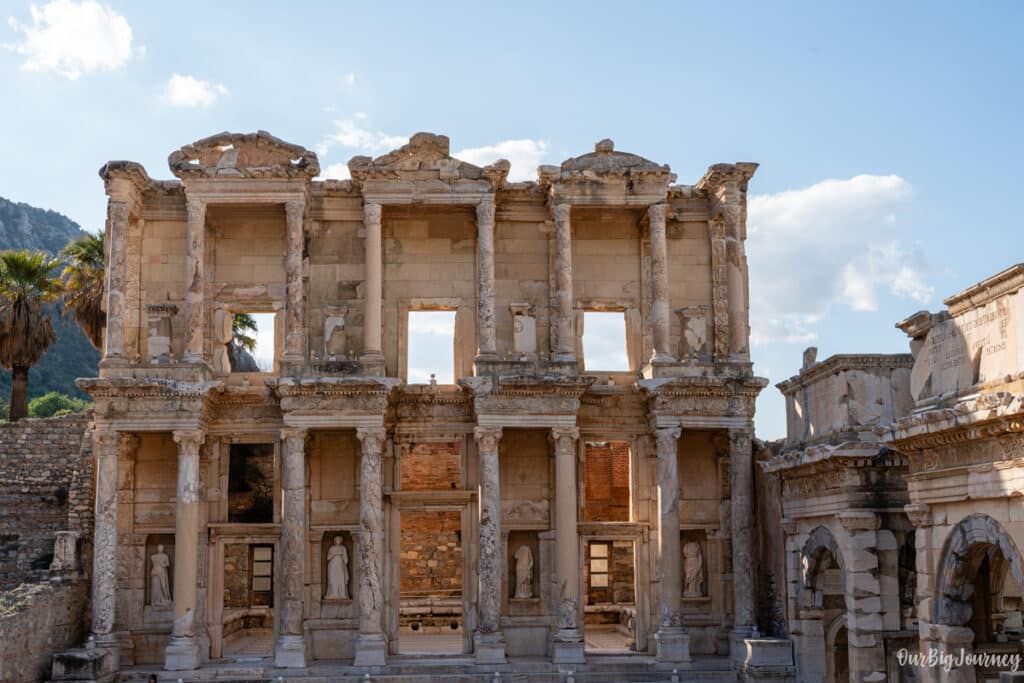
Final Thoughts on when traveling to Ephesus
Exploring Ephesus is more than just a historical excursion. It’s a connection to the very roots of modern civilization. As you walk through its ancient streets, admire the architecture, and imagine life in the Roman Empire, it’s impossible not to be moved by the scale and sophistication of what once was.
Whether you’re a history buff, a casual traveler, or a photographer in search of inspiration, Ephesus delivers a powerful and enriching experience. It’s a reminder that history isn’t just found in books—it’s carved in stone, waiting to be walked through.
Check all our posts about Turkey:









Leave a Reply
We'd love to hear from you! Your email is safe with us.